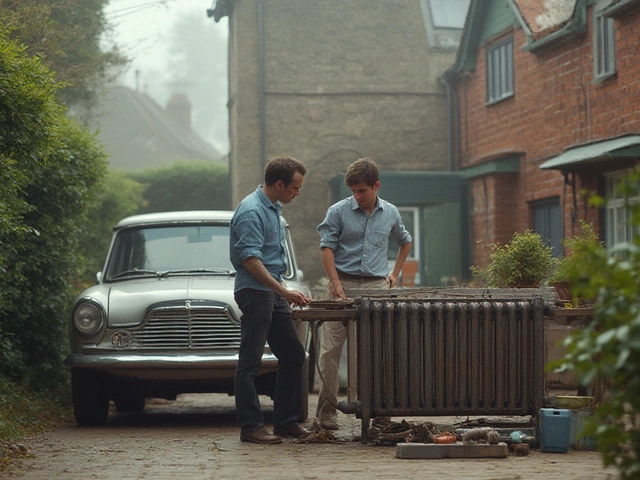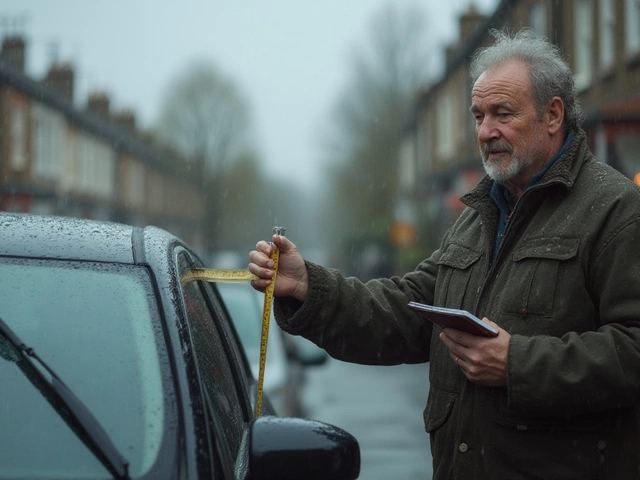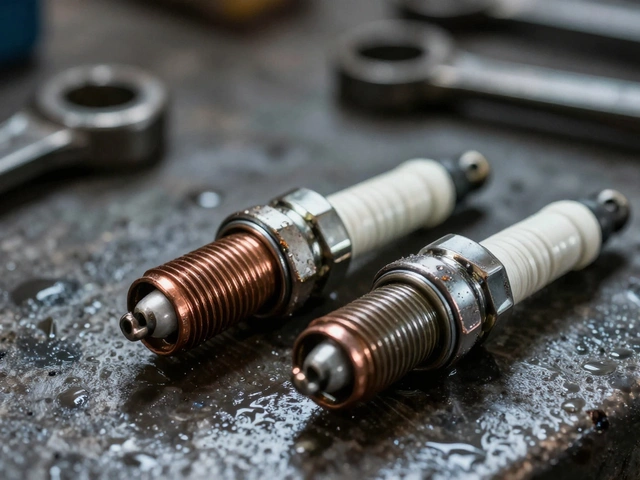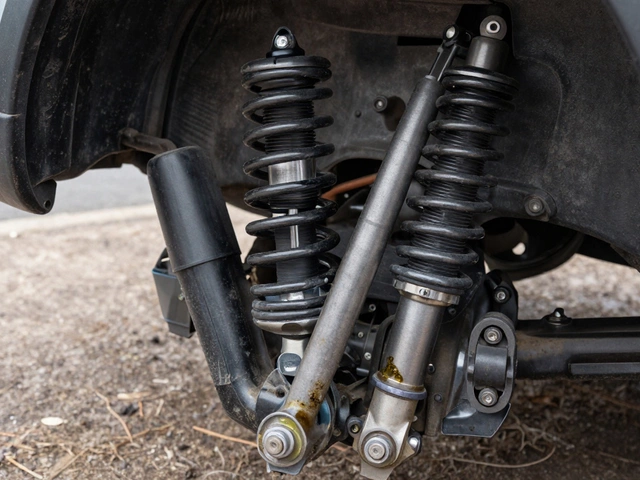Fuel Pump Symptom Checker
Check all symptoms you're experiencing to get a preliminary assessment of potential fuel pump issues. Note: This is not a diagnostic tool - always confirm with a professional fuel pressure test.
If your car sputters on the highway, struggles to start after sitting overnight, or dies under heavy load like climbing a hill, you might be dealing with a failing fuel pump. It’s not always obvious-unlike a dead battery or a bad spark plug-but a weak or broken fuel pump can leave you stranded with no warning. In the UK, where fuel quality varies and older cars are common, this issue pops up more than you’d think. The good news? You don’t need a garage to spot the signs. Here’s how to tell if your car really needs a new fuel pump-and what to do next.
It Won’t Start, or Takes Forever to Turn Over
One of the clearest signs? Your engine cranks but won’t fire up. You turn the key, hear the starter spinning, but no cough, no sputter, no life. This isn’t always the battery. If your battery is fine and the starter works, the fuel pump might not be delivering fuel fast enough-or at all.
Try this: turn the key to the ‘on’ position without starting the engine. Listen near the back seat or fuel tank area. You should hear a quiet, high-pitched whirring sound for about two seconds. That’s the fuel pump priming the system. If you hear nothing, the pump could be dead. If you hear a weak buzz or clicking, it’s struggling. A pump that’s failing often makes more noise than usual before it gives out completely.
Loss of Power Under Load
Have you noticed your car losing power when you step on the gas-especially on the motorway or going uphill? It feels like the engine is choking, even though the revs climb. That’s not just a dirty air filter. It’s the fuel pump failing to keep up with demand.
Modern engines need precise fuel pressure. When the pump weakens, it can’t maintain pressure during high RPMs or heavy acceleration. You might think it’s the transmission or a sensor, but if the problem only happens under load, and the engine runs fine at idle, the fuel pump is the likely culprit. I’ve seen this happen on a 2013 Ford Focus in Manchester-driver thought it was a clogged injector. Turned out the pump was delivering half the required pressure.
Engine Stalling at High Speeds
Stalling isn’t always about overheating or a faulty ignition. If your car suddenly cuts out while cruising at 60 mph, then starts again after sitting for a few minutes, that’s a classic fuel pump failure pattern. The pump overheats under constant load, then shuts down temporarily. Once it cools, it works again-until the next time you push it.
This isn’t normal. A healthy fuel pump handles highway speeds without flinching. If you’re driving on the M6 or A34 and your car dies without warning, don’t just blame bad fuel. Check the pump. It’s a safety issue. You don’t want to stall in the fast lane.
Random Misfires or Rough Idle
Maybe your engine runs fine most of the time, but occasionally misfires-especially when idling at traffic lights. You get a check engine light, and the code points to a misfire on cylinder 3. You replace the spark plug. The problem comes back. Why?
Low fuel pressure causes lean conditions. The engine isn’t getting enough fuel to burn cleanly, so it misfires. This can mimic bad injectors, vacuum leaks, or even a failing O2 sensor. But if you’ve checked those and the problem persists, low fuel pressure is the hidden cause. A fuel pressure gauge is the only way to know for sure. Most garages have one. You can rent one from Halfords for under £20.

Whining or Loud Noises from the Fuel Tank
It’s not normal to hear your fuel tank making noise. A quiet hum? Fine. A loud whine, grinding, or high-pitched scream? That’s the pump wearing out. The internal bearings or impeller are breaking down. This noise usually gets worse as the engine warms up.
Some people ignore it, thinking it’s just the fuel sloshing. But a noisy pump is a dying pump. It’s not just annoying-it’s inefficient. The pump has to work harder, drawing more power from the alternator and overheating faster. Replace it before it leaves you stranded. I’ve seen pumps fail completely after 10,000 miles of whining.
Fuel Economy Takes a Nose Dive
You fill up every 250 miles now, when you used to get 350. Your car feels sluggish. You’ve changed the air filter, checked the tyres, and even got a service. Nothing helps.
A failing fuel pump can cause over-fueling. When the pressure regulator can’t maintain the right pressure, the ECU compensates by spraying more fuel than needed. This wastes fuel, increases emissions, and can foul your spark plugs. If your MPG has dropped by 15% or more with no other changes, the fuel pump is a strong suspect.
How to Test It Without a Mechanic
You don’t need to pay £100 for a diagnostic just to confirm a bad pump. Here’s how to test it yourself:
- Get a fuel pressure gauge (available to rent from auto parts stores).
- Locate the fuel rail test port-usually under the hood, near the engine. Check your manual if you’re unsure.
- Attach the gauge and turn the ignition to ‘on’ (don’t start the engine).
- Look for pressure reading: most cars need 30-60 psi. Check your owner’s manual for the exact number.
- Start the engine. Pressure should stay steady. If it drops more than 5 psi in 10 seconds, the pump or regulator is leaking.
- Rev the engine. Pressure should rise slightly. If it stays flat or drops, the pump can’t keep up.
If you’re not comfortable doing this, take it to a garage. But at least now you’ll know what to ask for. Don’t let them just ‘check the codes’-ask for a fuel pressure test.
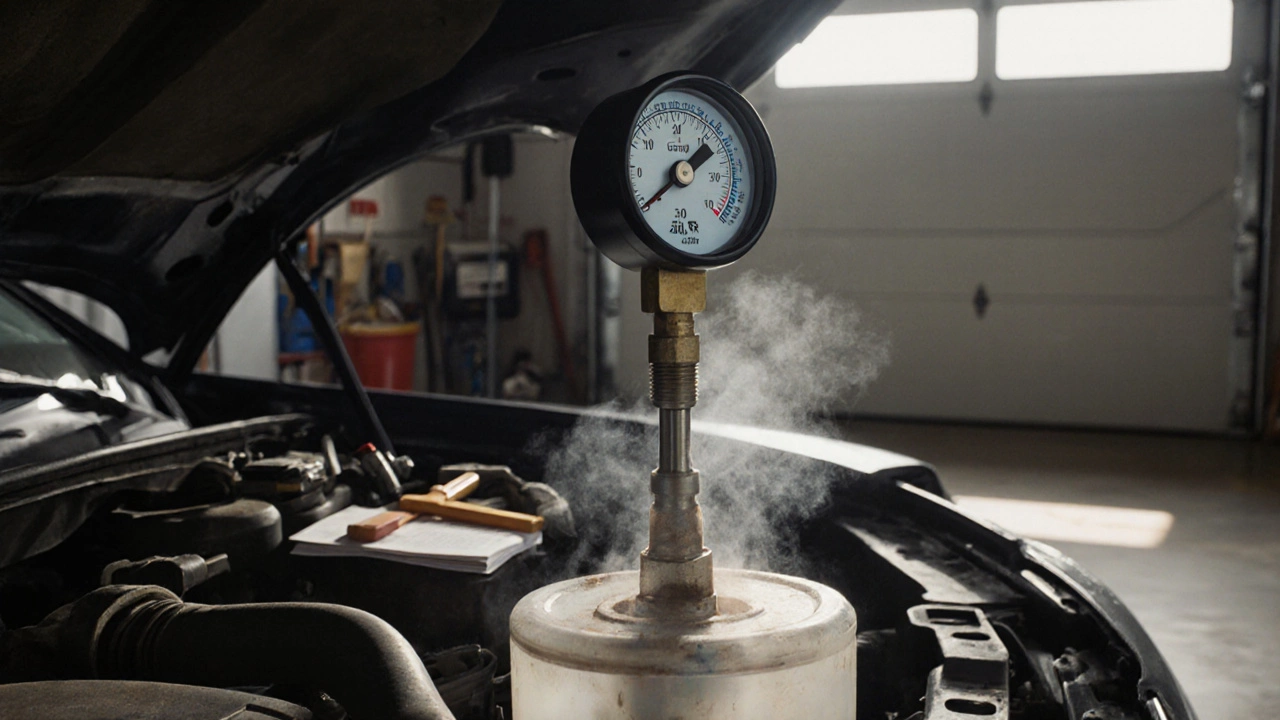
What Happens If You Ignore It?
Ignoring a bad fuel pump doesn’t just mean you’ll get stuck. It can damage other parts. A weak pump forces the engine to run lean, which overheats valves and can crack pistons. It can also overload the fuel injectors, causing them to fail prematurely. And if the pump seizes completely, metal fragments can clog your fuel filter or even enter the engine.
Replacement isn’t cheap-£300 to £600 depending on your car-but it’s far cheaper than a new engine. And in the UK, where fuel prices are high, a failing pump wastes money every week.
When to Replace It
Most fuel pumps last 100,000 to 150,000 miles. But if your car is over 10 years old and you’re seeing multiple symptoms-no start, stalling, noise, poor fuel economy-it’s time to replace it. Don’t wait for it to die on the motorway.
Some mechanics recommend replacing the fuel filter at the same time. It’s cheap insurance. If your pump is failing, the filter is probably clogged with debris. Replacing both saves you a second labour charge later.
Use OEM or reputable aftermarket brands like Bosch, Denso, or Delphi. Cheap pumps fail faster-and you’ll be back in the garage before the year’s out.
Final Tip: Keep Your Tank Half Full
Running your tank low is one of the worst things you can do to a fuel pump. The fuel cools and lubricates the pump. When the tank is nearly empty, the pump runs hot and dries out. That’s why so many pumps fail in winter-people run on fumes to save a few pounds at the pump.
Keep your tank at least half full. It’s not just good for the pump-it’s good for your peace of mind.
Can a bad fuel pump cause the check engine light to come on?
Yes. A failing fuel pump often triggers codes like P0191 (fuel pressure sensor range/performance), P0087 (fuel rail pressure too low), or P0300 (random misfire). These codes point to fuel delivery problems, not necessarily the pump itself-but if you’ve ruled out injectors, sensors, and filters, the pump is the next logical step.
Can I drive with a bad fuel pump?
Technically, yes-but it’s risky. You might get a few more miles, but the pump could fail at any moment, especially under load. If you’re on a long journey or driving in heavy traffic, you could be stranded. It’s not worth the risk. Replace it as soon as you’re sure.
How long does a fuel pump replacement take?
Most garages take 2 to 4 hours to replace a fuel pump. The time depends on the car. Some models have an access panel under the rear seat, making it quick. Others require dropping the fuel tank, which adds time and labour cost. If you’re doing it yourself, expect 4 to 6 hours with the right tools.
Is it cheaper to replace the fuel pump myself?
Yes, if you have basic tools and some mechanical confidence. A fuel pump costs £150-£350 depending on your car. Labour at a garage can add £200-£400. Doing it yourself saves you that labour cost. YouTube has step-by-step guides for most models. Just be careful with fuel lines-gasoline is flammable. Drain the tank as much as possible before starting.
Can a clogged fuel filter cause the same symptoms as a bad fuel pump?
Yes, absolutely. A clogged filter restricts fuel flow and causes low pressure, which mimics a failing pump. That’s why mechanics always check the filter first. If your filter hasn’t been replaced in 30,000 miles or more, swap it out before assuming the pump is bad. It’s cheaper and easier.

